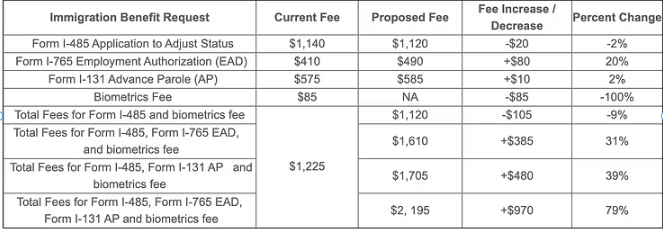December 2019 Visa Bulletin
The Department of State (“DOS”) Visa Office has released the December 2019 Visa Bulletin. Similar to the November Visa Bulletin, forward movement for certain employment-based visa categories continues at up to 2-3 months. The EB-1 category for China will move forward by 3.4 months and all other countries will see an advancement of 1.5 months while EB-1 India will remain the same at January 1, 2015. EB-1 India is not expected to advance anytime soon as DOS reported that 17% of the targeted EB-1 India numbers set aside for Q1 of the Fiscal Year had already been reached in October 2019. The DOS predicts that the EB-1 category for all other countries could potentially return to Current in mid Fiscal Year if demand continues at the same pace. The EB-2 category for China will move forward by 3 months while EB-2 India will continue to slowly advance by day increments. The EB-3 category for China and India will continue to stall at the Final Action Dates established at the beginning of Fiscal Year 2020 on October 1, 2019
As of November 25, 2019, the USCIS has yet to confirm which Application Chart will be used for the month of December 2019.
Update on USCIS’ Proposed Rule for Fee Schedule for Fiscal Year 2019/2020 and Changes to Certain Immigration Benefit Request Requirements
As mentioned in last week’s newsletter, the Department of Homeland Security (DHS) published its proposed rule for the U.S. Citizenship and Immigration Services (USCIS) FY 2019/2020 Fee Schedule on November 14th. The proposed rule will adjust the fee schedule by a weighted average increase of 21% to cover the agency’s increased costs to adjudicate immigration benefit requests, detect and deter immigration fraud, and thoroughly vet applicants, petitioners, and beneficiaries. In addition, the USCIS plans to change certain requirements for applications, including changes to premium processing and establishing different fees for petitions for nonimmigrant workers under H, L, TN, and O.
Below is a brief outline of the relevant proposed changes that will affect business immigration if implemented. Please note that the fees listed are subject to change as the proposed rule is still in the notice and comment period under the rulemaking process. Comments are due by December 16, 2019.
Biometrics Fee
DHS proposes to remove the separate biometrics fees and will incorporate the cost for biometric services into the underlying immigration benefit request fees.
Changes to Premium Processing
DHS proposes to change the 15 calendar-day period for premium processing requests to 15 business days.
Separating I-129, Petition for a Nonimmigrant Worker on Different Forms & Different Fees
DHS proposes to separate Form I-129 into several forms and proposes different fees for these new forms.
USCIS Proposed Fees for Separated Form I-129 for Fiscal Year 2019/2020
Fees for Adjustment of Status Application with EAD and Advance Parole Requests
DHS proposes to remove the bundled fee for Form I-485 Application to Adjust Status and the interim benefits for work authorization (EAD) and advance parole (travel document). If the proposed rule is implemented, there will be separate filing fees for Form I-765 (EAD) and Form I-131 advance parole filed concurrently with a Form I-485, or after USCIS accepts their Form I-485 and while it is still pending. In addition, the DHS proposes to eliminate the Form I-485 fee of $750 for minor children, and the proposed I-485 fee will apply to all applicants, regardless of age.
Current and Proposed Fees for EAD/AP and Adjustment of Status with Interim Benefits
83% Fee Increase for N-400, Application for Naturalization
DHS proposes to increase the fee for Form N-400, Application for Naturalization, from $640 to $1,170, a $530 increase. In the proposed rule, DHS proposes the 83% to recover the full cost of adjudicating the Form N–400, stating: “In crafting prior fee rules, DHS reasoned that setting the Form N-400 fee at an amount less than its estimated costs and shifting those costs to other fee payers was appropriate in order to promote naturalization and immigrant integration. DHS now believes that shifting costs to other applicants in this manner is not equitable given the significant increase in Form N-400 filings in recent years.”


